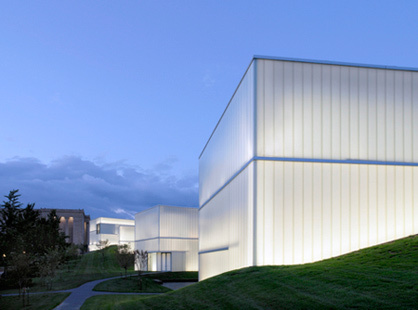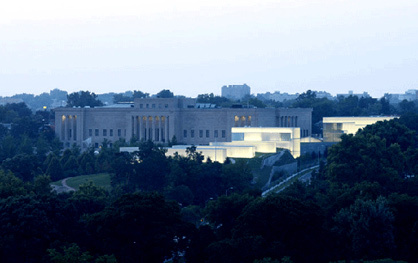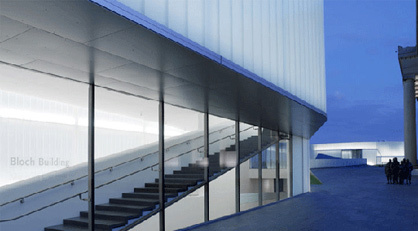Translucent insulated glass
Text by Sascha Peters
Berlin, Germany
17.09.08
The extension to the Nelson-Atkins Museum of Art in Kansas City is an impressive example of the use of translucent but opaque glass facades.
The extension to the Nelson-Atkins Museum of Art in Kansas City is an impressive example of the use of translucent but opaque glass facades. The new building complex is an ensemble of five milky-white glass cubes designed by Steven Holl Architects and completed in June 2007. Thanks to the natural light which enters the building it has been possible to extend the exhibition area below ground.
The extension to the Nelson-Atkins Museum of Art in Kansas City/USA by Steven Holl Architects
The use of insulated glass with a special capillary inlay of PMMA over an area of around 350 square metres creates ideal light conditions for the requirements of the museum. The glass provides a high level of light transmission while at the same time offering excellent heat insulation and glare protection, which ensures that the works of art are not affected by UV radiation. The inlay is offered under the Kapipane brand and is supplied by the firm of Okalux.





